© 2025 MJH Life Sciences™ , Patient Care Online – Primary Care News and Clinical Resources. All rights reserved.
10 Questions on the Year in COPD for Primary Care
Confirmation of <.70 ratio as cutoff for COPD diagnosis topped news in COPD research this year. Test yourself on details of all the other events.
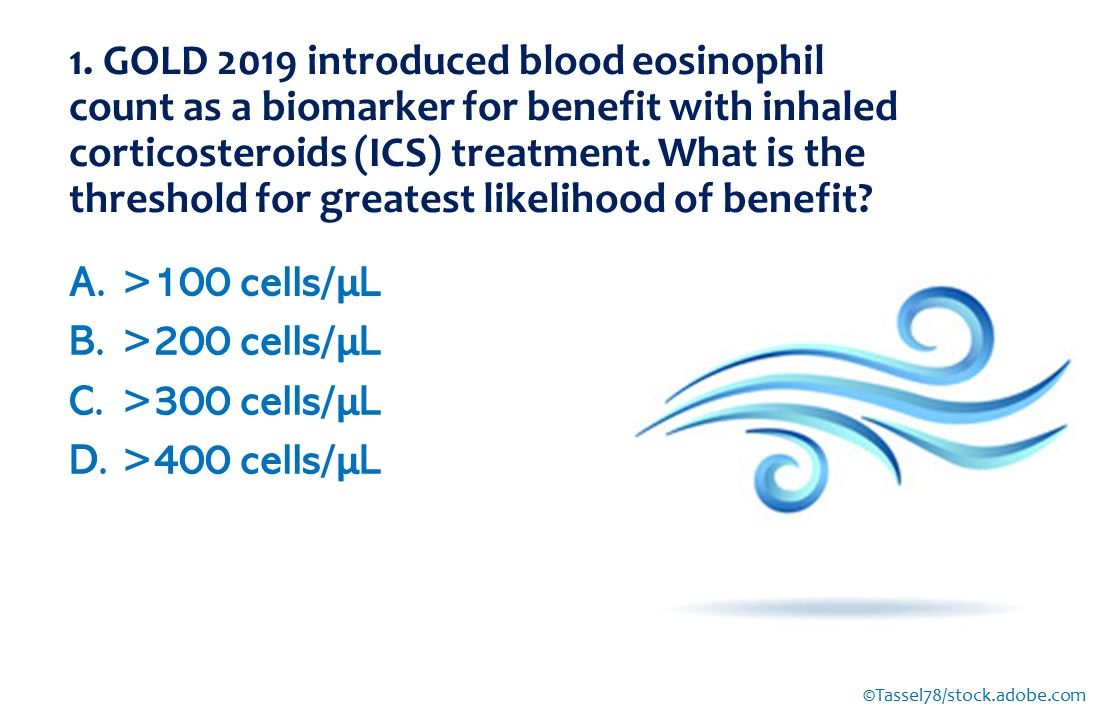
1. GOLD 2019 introduced blood eosinophil count as a biomarker for benefit with inhaled corticosteroids (ICS) treatment. What is the threshold for greatest likelihood of benefit?
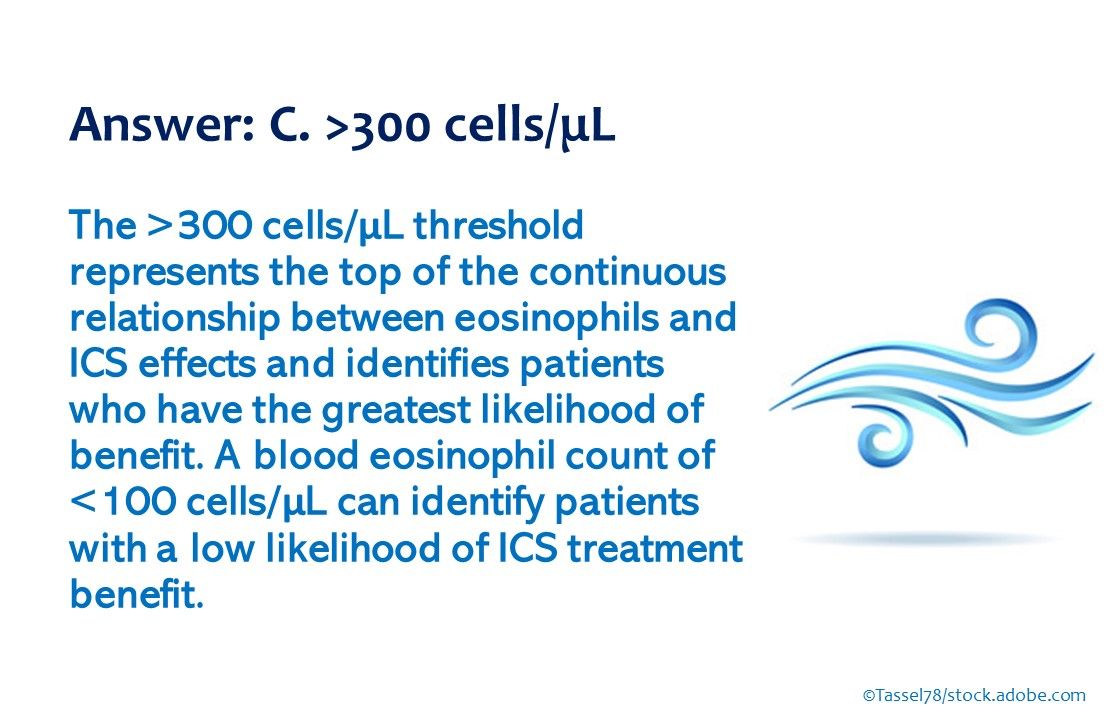
Answer: C. >300 cells/μL. The >300 cells/μL threshold represents the top of the continuous relationship between eosinophils and ICS effects and identifies patients who have the greatest likelihood of benefit.
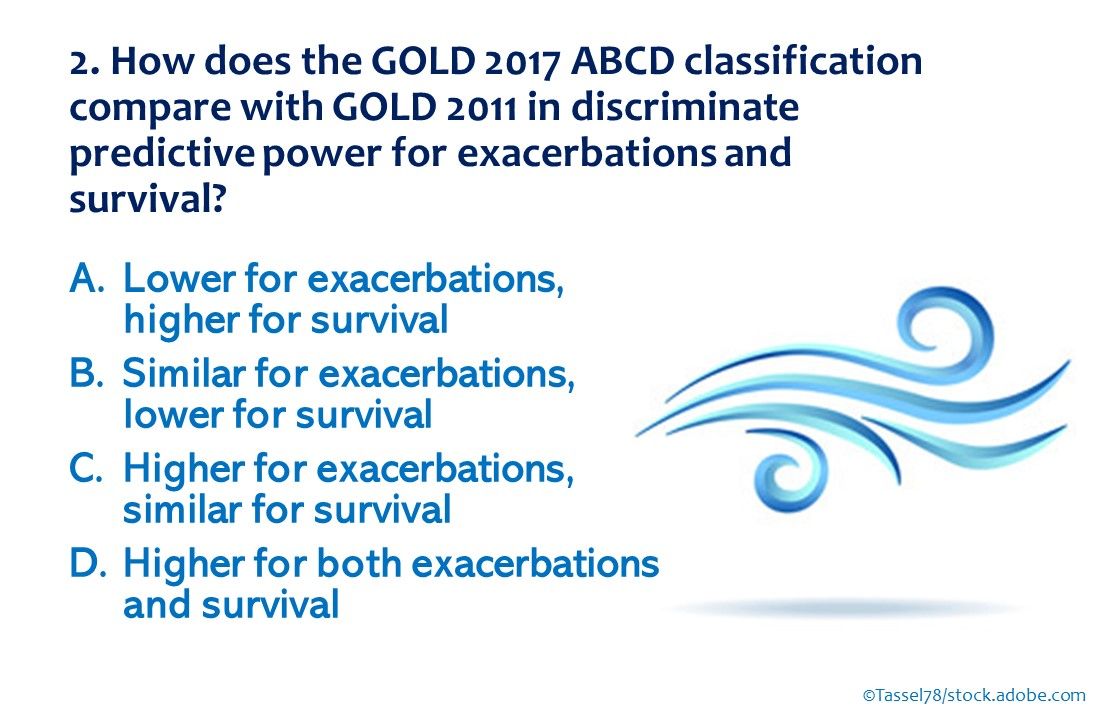
2. How does the GOLD 2017 ABCD classification compare with GOLD 2011 in discriminate predictive power for exacerbations and survival?
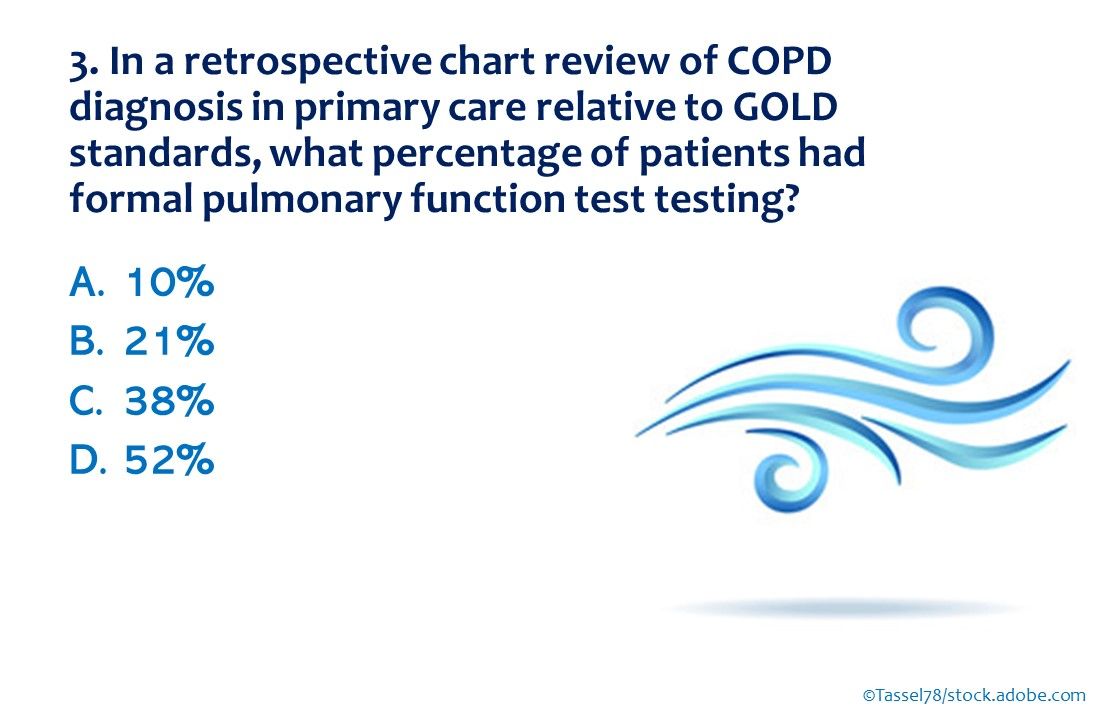
3. In a retrospective chart review of COPD diagnosis in primary care relative to GOLD standards, what percentage of patients had formal pulmonary function test testing?
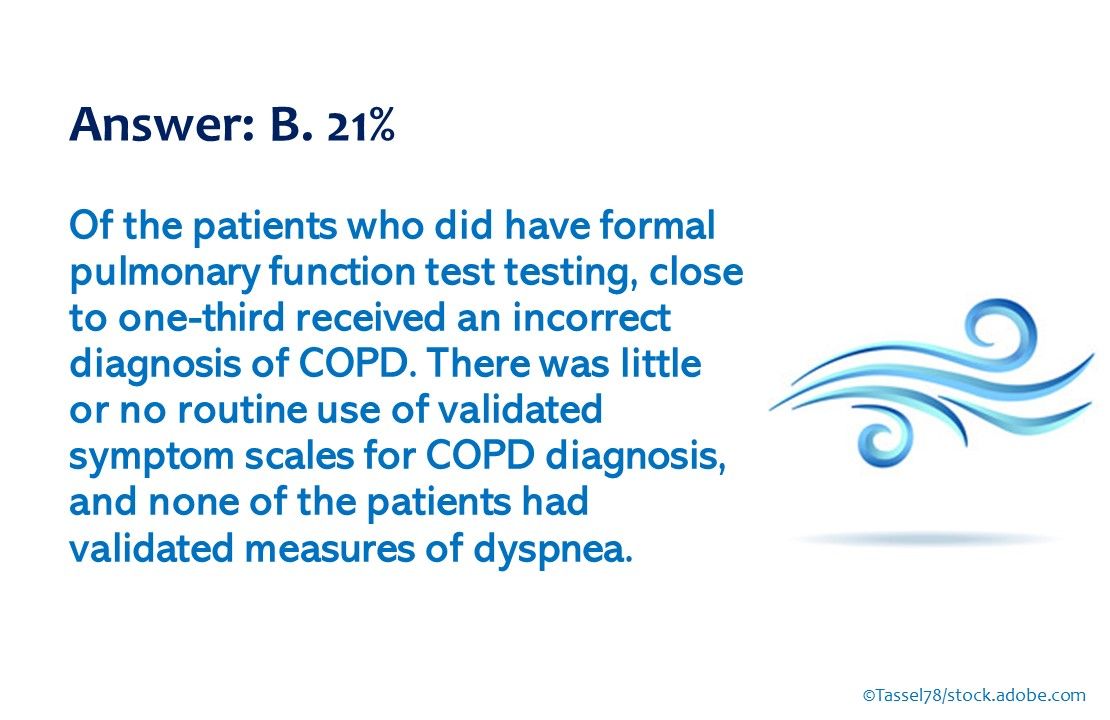
Answer: B. 21%. Of the patients who did have formal pulmonary function test testing, close to one-third received an incorrect diagnosis of COPD.
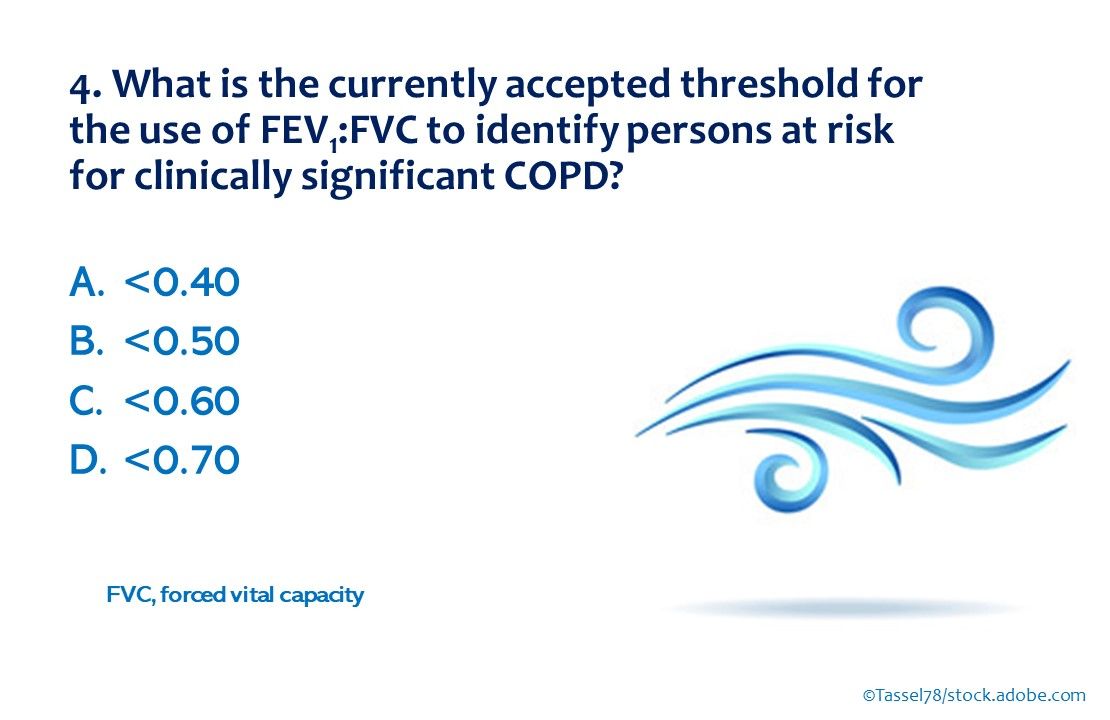
4. What is the currently accepted threshold for the use of FEV1:FVC to identify persons at risk for clinically significant COPD?
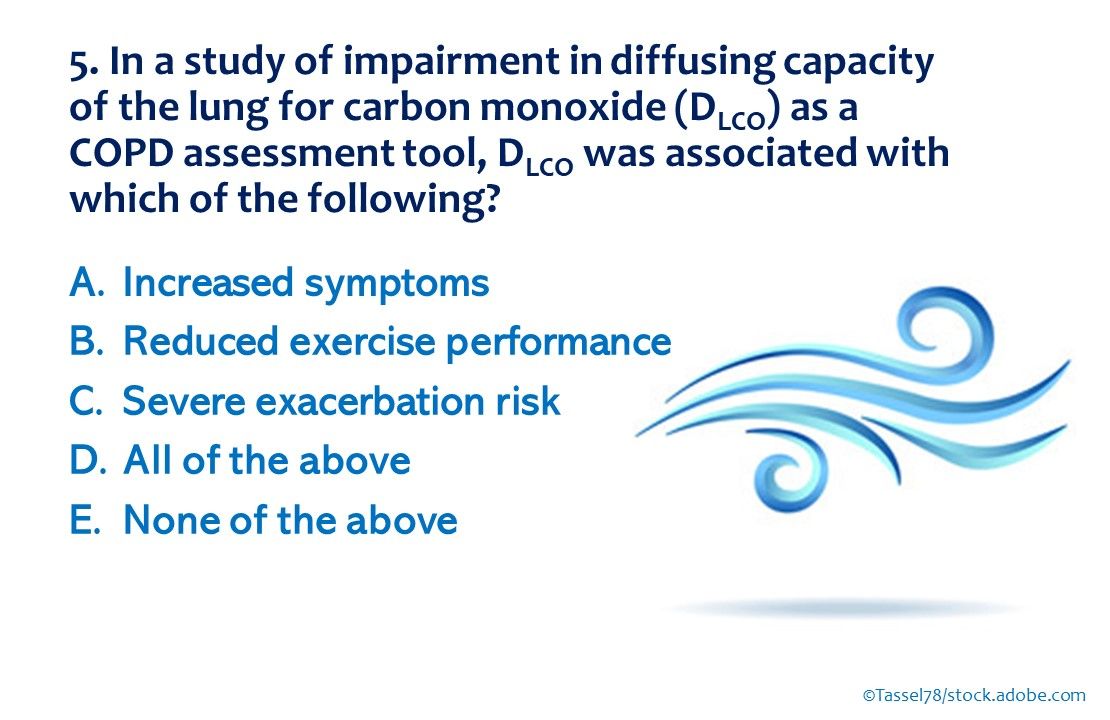
5. In a study of impairment in diffusing capacity of the lung for carbon monoxide (DLCO) as a COPD assessment tool, DLCO was associated with which of the above?

Answer: D. All of the above. DLCO was associated with increased symptoms, reduced exercise performance, and severe exacerbation risk even after spirometry and CT evidence of emphysema were accounted for.
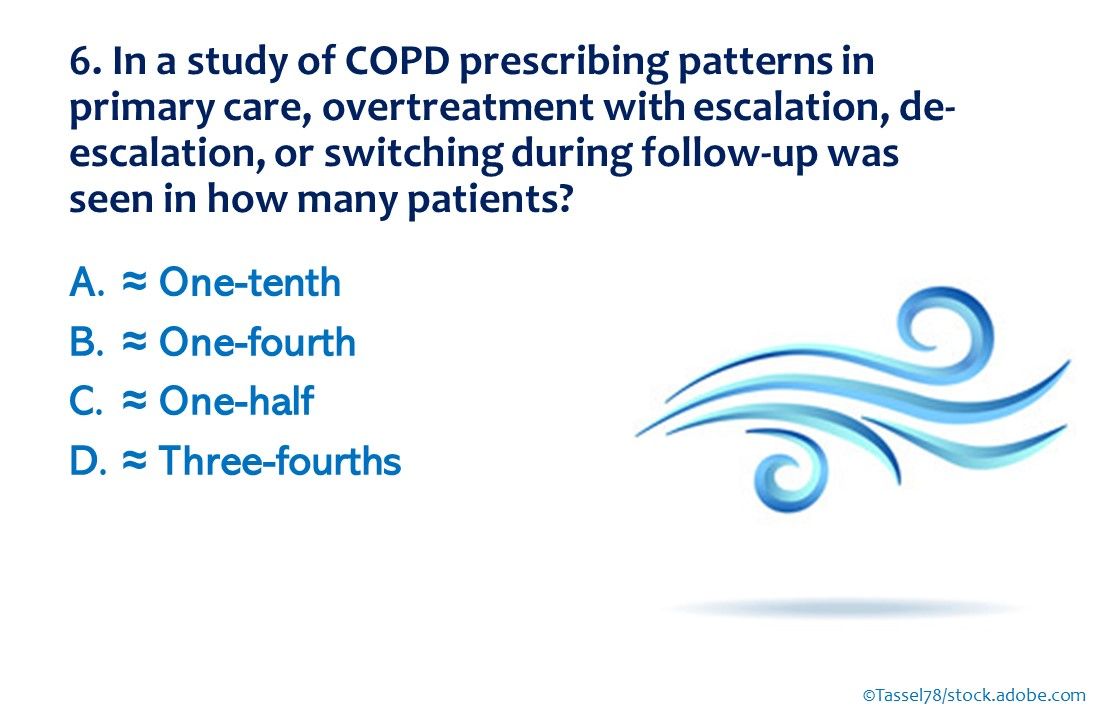
6. In a study of COPD prescribing patterns in primary care, overtreatment with escalation, de-escalation, or switching during follow-up was seen in how many patients?
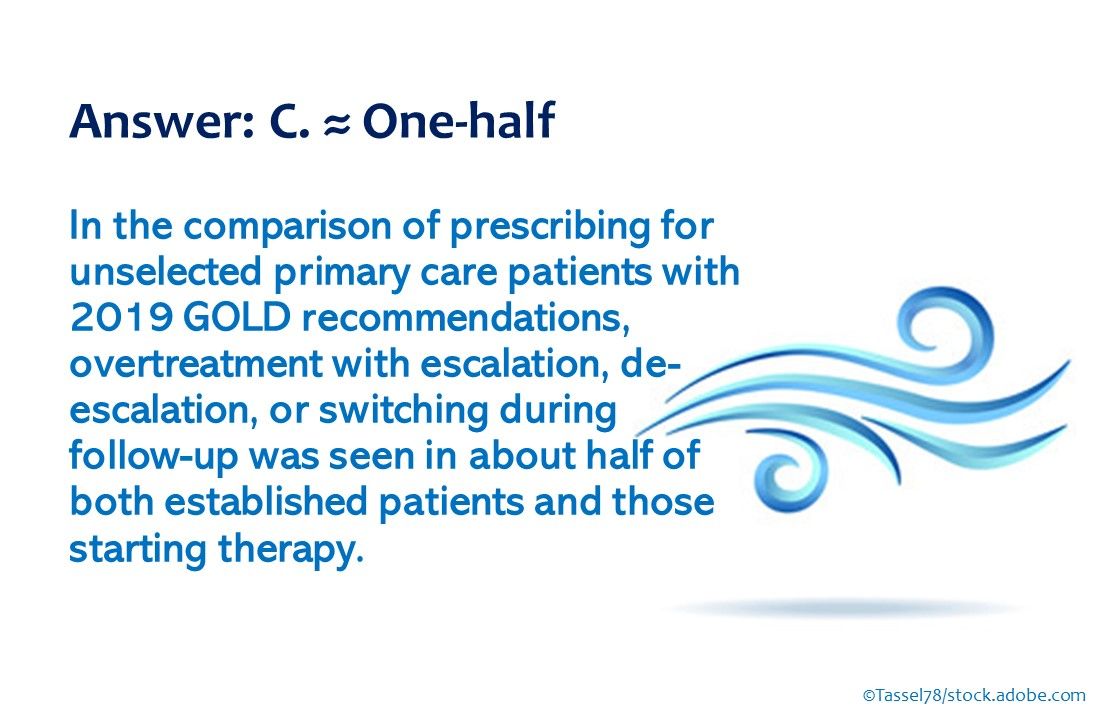
Answer: C. ~One-half. In the comparison of prescribing for unselected primary care patients with 2019 GOLD recommendations, overtreatment with escalation, de-escalation, or switching during follow-up was seen in about half of both established patients and those starting therapy.
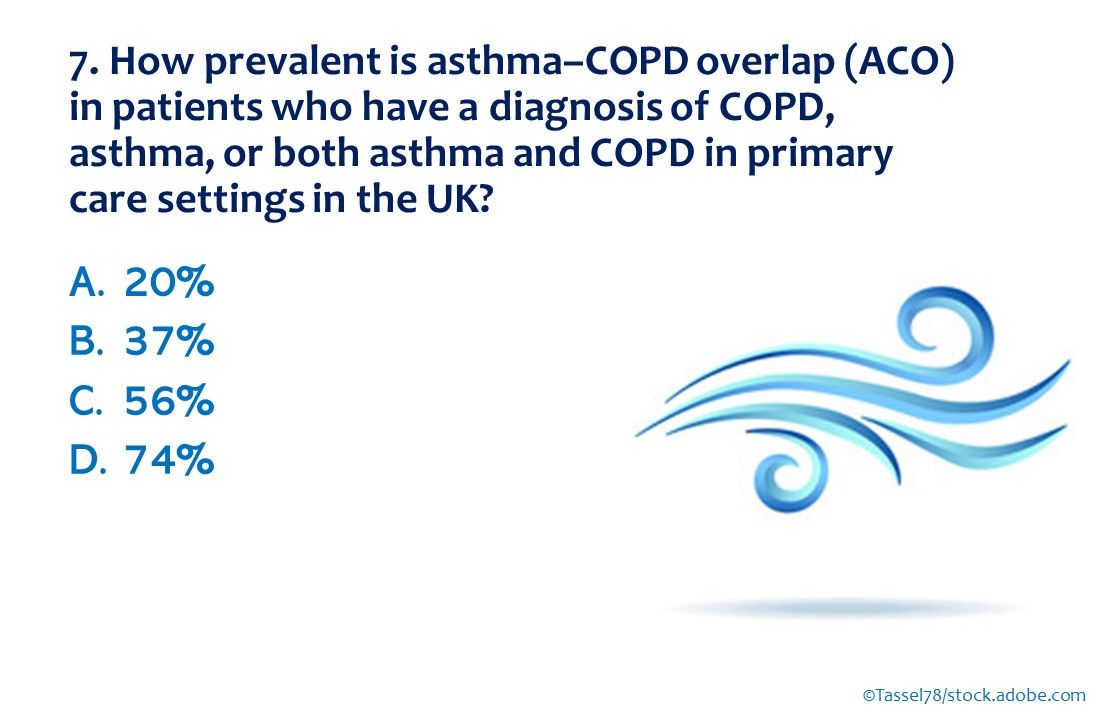
7. How prevalent is asthma–COPD overlap (ACO) in patients who have a diagnosis of COPD, asthma, or both asthma and COPD in primary care settings in the UK?
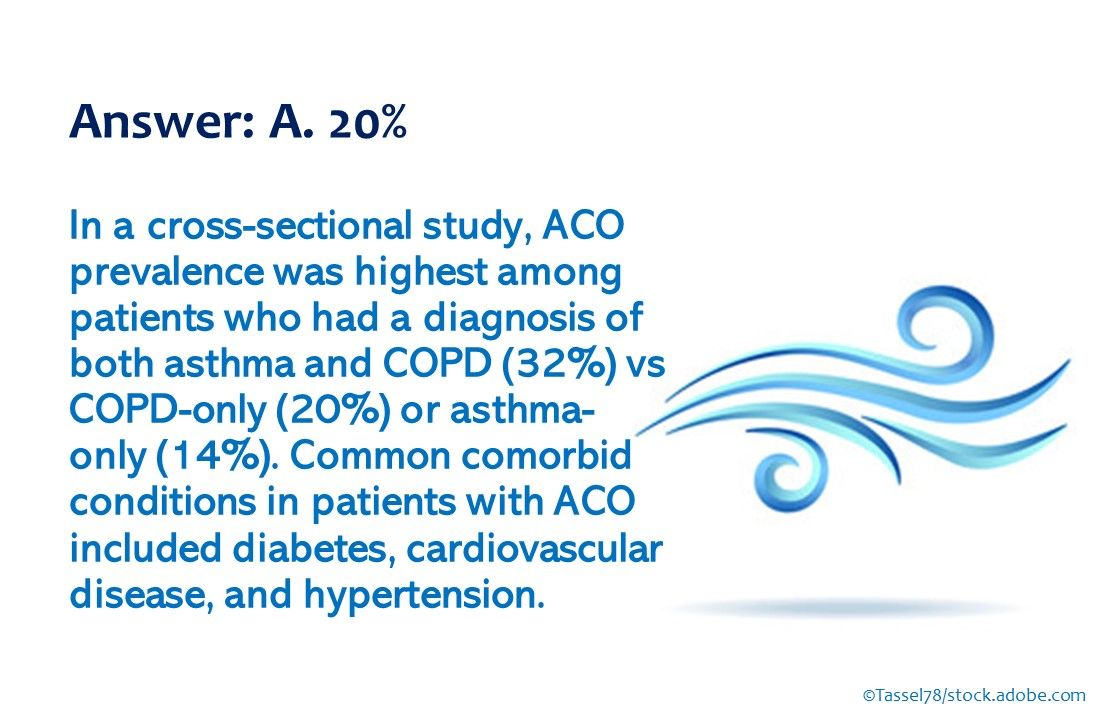
Answer: A. 20%. In a cross-sectional study, ACO prevalence was highest among patients who had a diagnosis of both asthma and COPD (32%) vs COPD-only (20%) or asthma-only (14%).
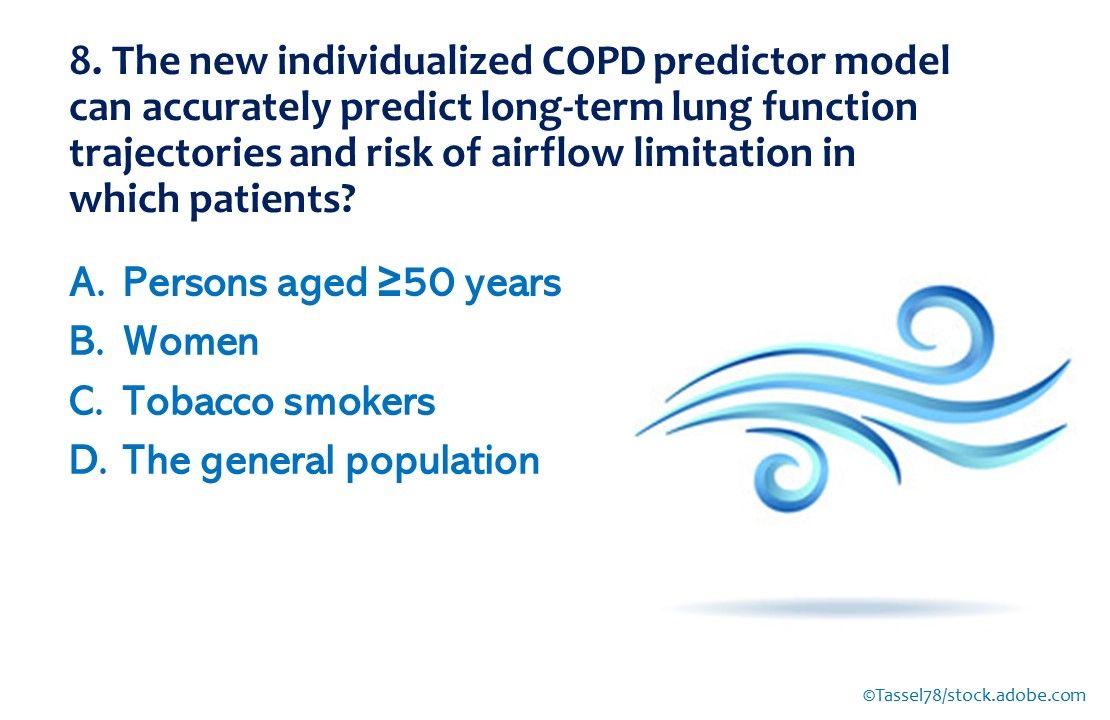
8. The new individualized COPD predictor model can accurately predict long-term lung function trajectories and risk of airflow limitation in which patients?
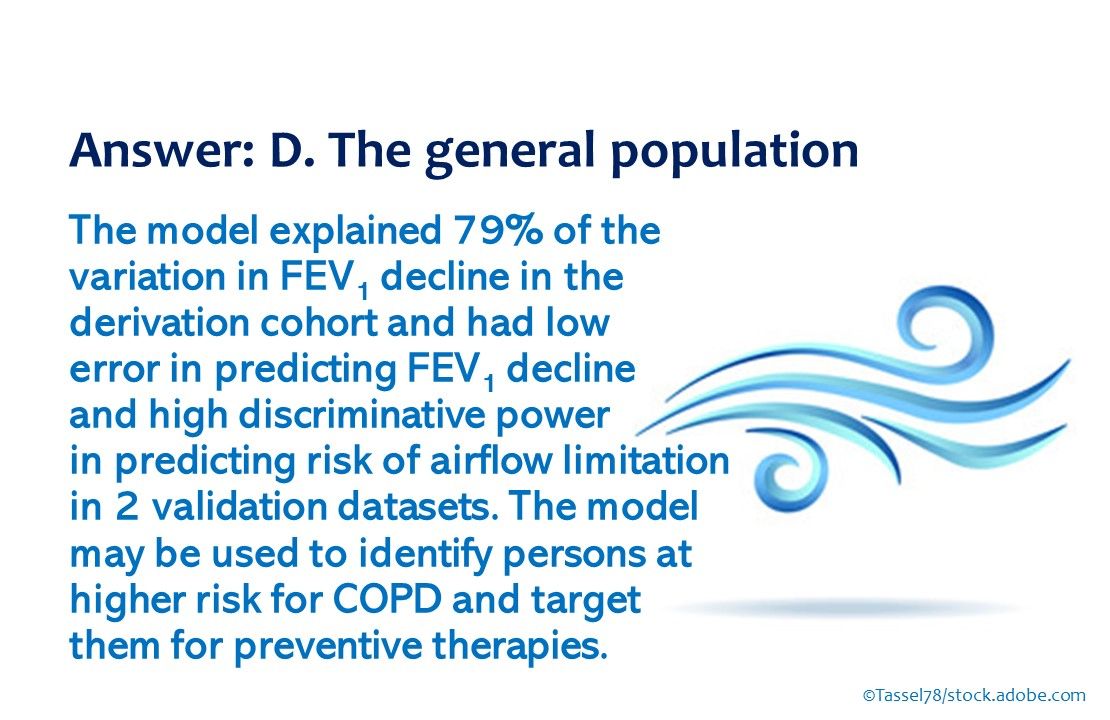
Answer: D. The general population. The model explained 79% of the variation in FEV1 decline in the derivation cohort and had low error in predicting FEV1 decline and high discriminative power in predicting risk of airflow limitation in 2 validation datasets.
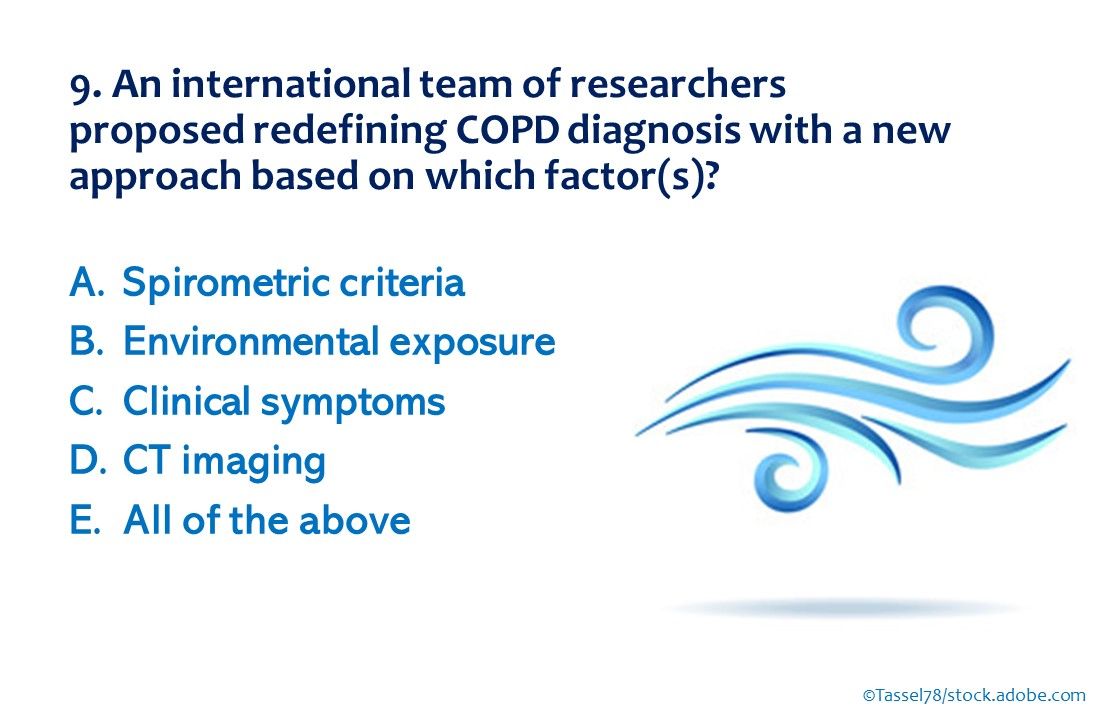
9. An international team of researchers proposed redefining COPD diagnosis with a new approach based on which factor(s)?
The year in COPD started with Global Initiative for Chronic Obstructive Lung Disease (GOLD) 2019, and many key developments throughout the year were associated with the report’s recommendations and revisions.The 10 questions that follow test your recall of the main events in COPD research and practice in 2019 and how they might affect disease management in primary care.









